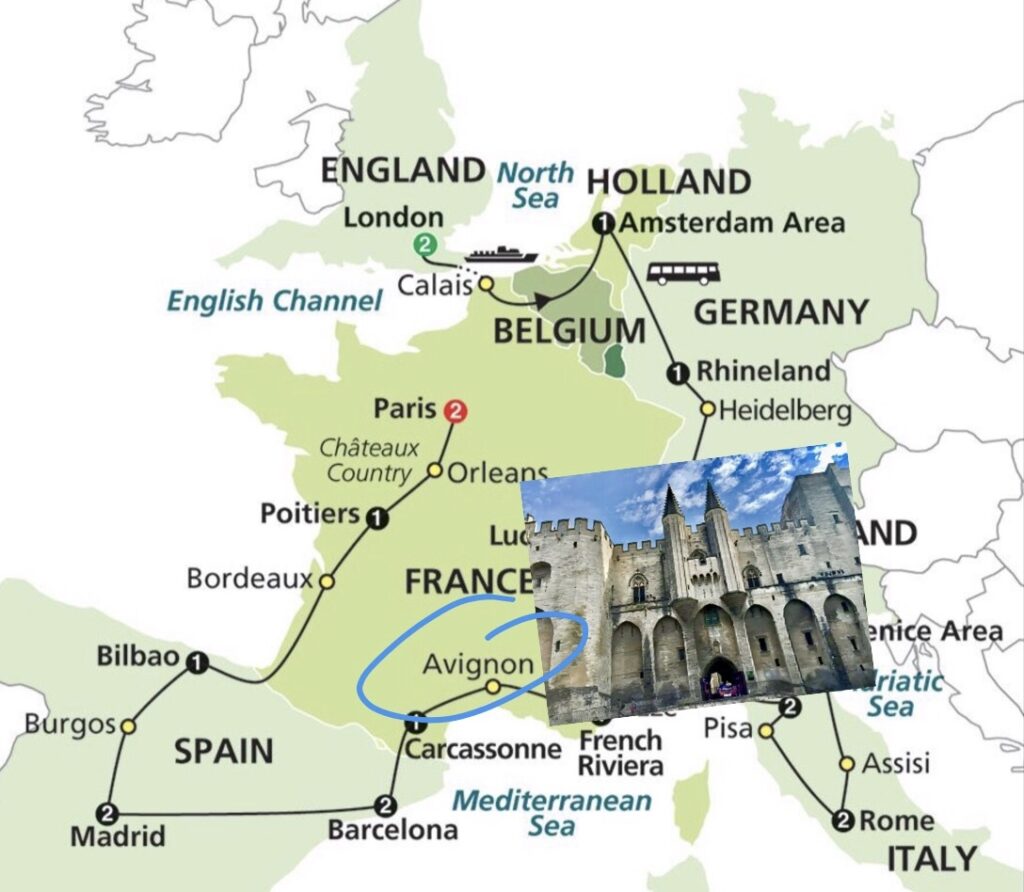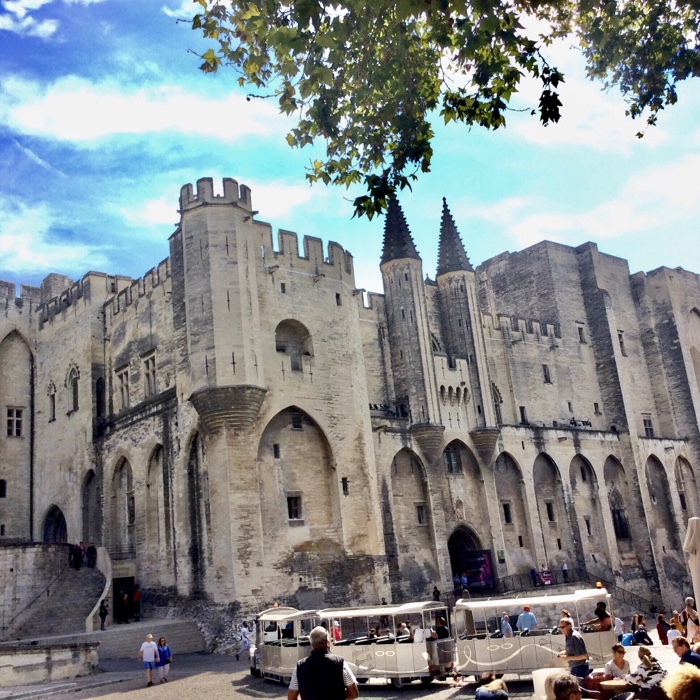“It doesn’t matter where you are. You are nowhere compared to where you can go.” – Bob Proctor

On our way to Avignon…


The walls of Avignon are a series of defensive stone walls that surround the city in the south of France. They were originally built in the 14th century during the Avignon papacy and have been continually rebuilt and repaired throughout their history.

Avignon is a city best known for the “Palai de Papes” or the Palace of the Popes. This is a magnificent palace which since 1995 has been named “World Heritage Site” by UNESCO along with the historical center of Avignon.
This is a walkable city but we decided to take the mini tourist train first so as to get an idea of where to walk afterwards.

You may be wondering why this palace is located in France, when in fact, Rome or the Vatican is the main seat of the Catholic Church. Well, I have read that in the Middle Ages, popes were not just the head of the Roman Catholic church but they were also political heads. They had their own land and their own armies. And during that time, they had a lot of issues in Rome.
So for 68 years beginning in 1309, seven legitimate popes ruled the Catholic Church from Avignon rather than Rome. Pope Benedict XII began construction in 1335 the massive Palace of the Popes that now sits on the northern edge of Avignon. Over the course of 20 years, much of the Church’s funds were used to build the palace, which ultimately became the largest Gothic palace in Europe.
This is the ‘Great Chapel’ which is dedicated to Saints Peter and Paul. It was the former site of papal coronations and funerals.

This is a 3D scale model of the palace.

The Palace has gone through a lot of renovations and was at one time even used as a prison. Many frescoes were painted over, but despite this, some rooms were still intact with frescoes and brightly coloured ceilings gilded with gold.



Below are some original tiles that were on display.

A carved altarpiece depicting the ‘Carrying of the Cross’ now housed inside the Consistory.

South Sacristy, or the Cardinals’ Vestibule, features a painting of the Coat of Arms of Pius X on the arch above the window. We had an eerie yet sublime feeling when we entered this room.

Plaster effigies of prominent figures during the papal rule of the palace.

Chambre des Notaires, where we saw the 19th-century portraits of the nine Avignon popes painted by Henri Serrur.

It has been the seat of the Catholic popes and has remained under the papal rule until it became a part of France in 1791. Today it is one of the most visited tourist attractions in France. You can click on the images below to see the bigger photos of the Palace.









And so for now, we leave this amazing city of the Popes.


********************
These are extraordinary times. Some information may have changed due to Covid-19, always check for updates. Stay safe.
*******************

I visited Avignon and the Palace des Paupes in 2009. A wonderful place and a site you should absolutely visit. Thanks for bringing me back some memories.
Love the memories too…happy to share.
I’ve wanted to visit Avignon for some time – lovely to see your photos and read a bit about the palace. Did you see the famous bridge too?
I saw it from afar but didn’t get a photo of it. Oh well.
Maybe you’ll have a chance to return one day
I wish!